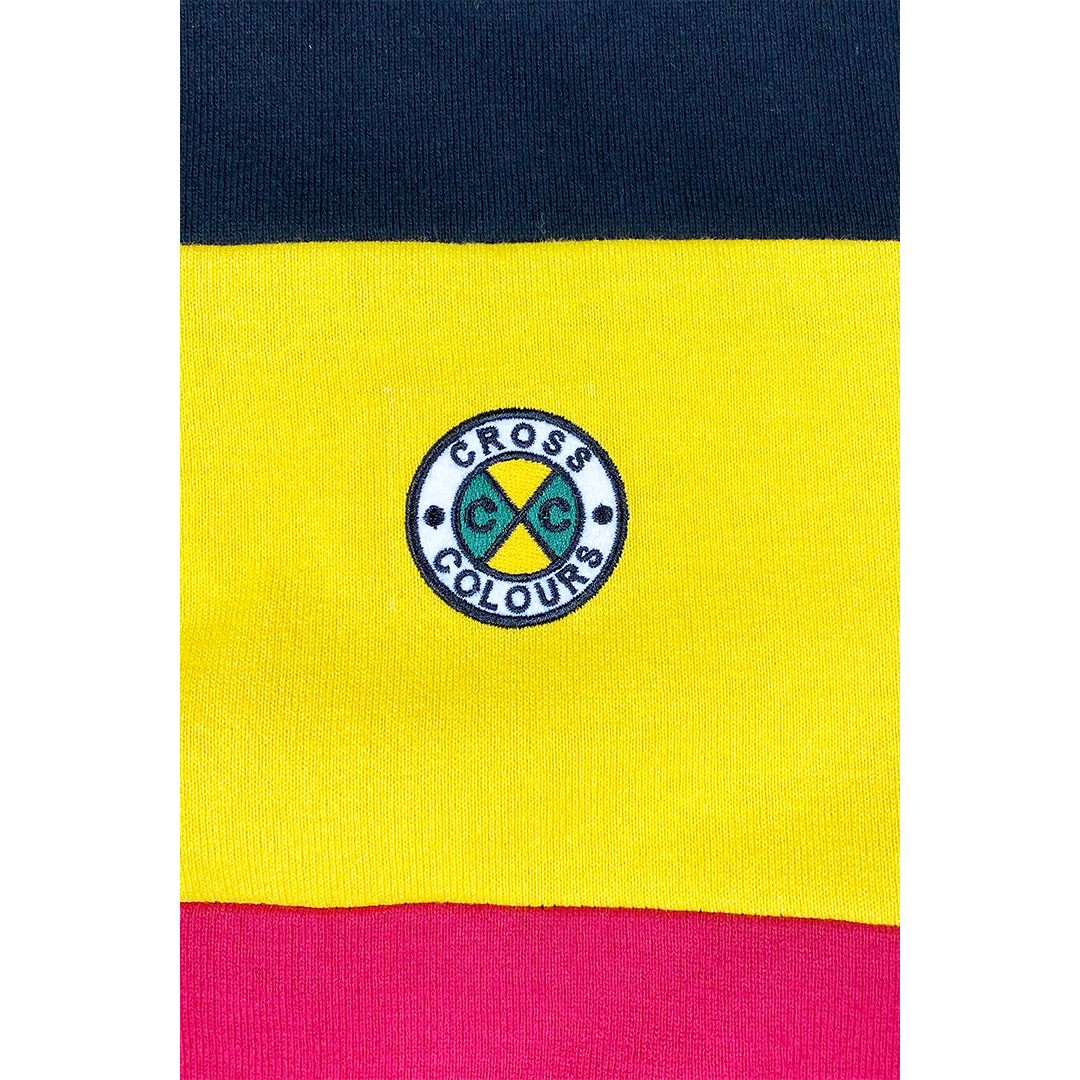
“It Was Never Just About Fashion”—The Founders of Cross Colours Discuss Their New Museum Exhibition
By Brooke Bobb | Originally published on Vogue.com, October 2, 2019

Photo: Courtesy of Elon Schoenholz
TJ Walker spent months scouring eBay, Amazon, and Etsy. He was on the hunt for the clothing he designed with his partner Carl Jones back in the late ’80s and early ’90s. Walker and Jones cofounded the revolutionary inclusive streetwear brand Cross Colours in 1989, and now, their 30 years of work has been put on display at The California African American Museum in L.A. The exhibition, Cross Colours: Black Fashion in The 20th Century, runs from now until March 1, 2020. “I found close to 300 pieces of clothing and accessories,” Walker says of his online hunt for the lost archive. “Some pieces Carl and I forgot that we even made; it was amazing to go through that journey.” As is highlighted in their first-ever museum exhibition, Cross Colours was and is today so much more than just a fashion label.
Through their bold designs and graphics, Walker and Jones originally set out to craft positive messaging around African American culture and oppression during the Reagan administration, when there was heightened police brutality, a war on drugs, and an education crisis in America. Cross Colours became widely recognized and worn by the hip-hop community, as well as by other black pop culture icons like Will Smith in The Fresh Prince of Bel-Air for its embrace of Pan-Africanism and Afrocentrism.

Photo: Courtesy of CAAM/Cross Colours
The exhibition, as explained by co-curator Tyree Boyd-Pates, “is organized as a visual roadmap of the African American social movements that inspired the brand, both thematically and historically.” He adds, “in particular, it shows how Cross Colours modeled black pride, community responsibility, and solidarity in the early 1990s.” Boyd-Pates goes on to note that this activism was “rooted in Black Nationalist movements from earlier in the 20th century,” those driven by Marcus Garvey, Malcom X, Dr. Martin Luther King Jr., and the Black Panther Party, specifically. The exhibit, which was co-curated by Taylor Blythewood-Porter, not only includes archival clothing, but also advertisements, television clips, and original sketches of designs done by Walker.
Today, Cross Colours has seen something of a resurgence in a fashion market that has been largely dominated by streetwear and luxury streetwear for the last few years. The label has a direct-to-consumer site that has been revamped, and the team is working on expanding its reach to sell within Europe. Cardi B and Bruno Mars wore Cross Colours on stage at the Grammys last year, and, as evidenced by Walker’s intensive online search, a new generation seemed to take note, scouring the Internet for the brand’s vintage items, then, in turn, reselling them. But more important are the political and social parallels between Cross Colours as it existed in the late ’80s and early ’90s and now. “I can’t believe that the slogan we printed on our T-shirts, ‘Clothing Without Prejudice,’ is something that still needs to be said today,” Jones says. “That was in the ’90s, and I think it’s as relevant today as it was then, maybe even more so.”
The fashion industry at large is still struggling with its understanding of diversity and African American representation, but as Walker points out, there are designers including Kerby Jean-Raymond and Virgil Abloh who are shepherding socio-political messages that tie directly back to those that Cross Colours championed so long ago. “We want to make sure these changes keep happening,” says Walker. “Everything in fashion is cyclical, but I want people to understand that inclusivity and diversity are not trends.”
“Thirty years later, we have a whole new generation of people to teach this to,” Walker notes. “We have a fresh start to teach this new generation about so many things: about where we started as a brand in South Central, what we stand for, and what the brand means.” He adds, “This is a brand that speaks to people. It was never just about fashion. It had so many arms and legs that expressed so many things when we started. To be able to do that again and to be accepted, which I think is very hard to do, be accepted by this generation because they’re tough, is an amazing thing.”































